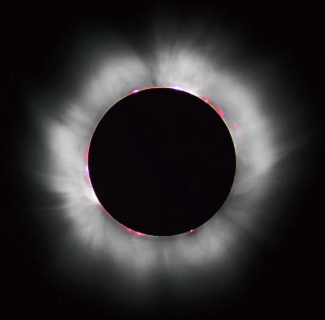For a new study, a team of physicists recruited roughly 1,000 undergraduate students at CU Boulder to help answer one of the most enduring questions about the sun: How does the star’s outermost atmosphere, or “corona,” get so hot?
The research represents a nearly-unprecedented feat of data analysis: From 2020 to 2022, the small army of mostly first- and second-year students examined the physics of more than 600 real solar flares—gigantic eruptions of energy from the sun’s roiling corona.
The researchers, partially lead by JILA fellow Heather Lewandowski, and including 995 undergraduate and graduate students, published their finding May 9 in The Astrophysical Journal. The results suggest that solar flares may not be responsible for superheating the sun’s corona, as a popular theory in astrophysics suggests.
“We really wanted to emphasize to these students that they were doing actual scientific research,” said James Mason, lead author of the study and an astrophysicist at the Johns Hopkins University Applied Physics Laboratory.
Study co-author Heather Lewandowski agreed, noting that the study wouldn’t be possible without the undergrads who contributed an estimated 56,000 hours of work to the project.
“It was a massive effort from everyone involved,” said Lewandowski, professor of physics and fellow of JILA, a joint research institute between CU Boulder and the National Institute of Standards and Technology (NIST).
Read the full article here.
Written by Dan Strain, Science Writer for CU Boulder's Strategic Relations and Communications



 The Physics Frontiers Centers (PFC) program supports university-based centers and institutes where the collective efforts of a larger group of individuals can enable transformational advances in the most promising research areas. The program is designed to foster major breakthroughs at the intellectual frontiers of physics by providing needed resources such as combinations of talents, skills, disciplines, and/or specialized infrastructure, not usually available to individual investigators or small groups, in an environment in which the collective efforts of the larger group can be shown to be seminal to promoting significant progress in the science and the education of students. PFCs also include creative, substantive activities aimed at enhancing education, broadening participation of traditionally underrepresented groups, and outreach to the scientific community and general public.
The Physics Frontiers Centers (PFC) program supports university-based centers and institutes where the collective efforts of a larger group of individuals can enable transformational advances in the most promising research areas. The program is designed to foster major breakthroughs at the intellectual frontiers of physics by providing needed resources such as combinations of talents, skills, disciplines, and/or specialized infrastructure, not usually available to individual investigators or small groups, in an environment in which the collective efforts of the larger group can be shown to be seminal to promoting significant progress in the science and the education of students. PFCs also include creative, substantive activities aimed at enhancing education, broadening participation of traditionally underrepresented groups, and outreach to the scientific community and general public.